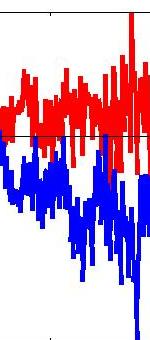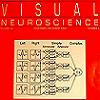Graeme Phillipson, 22nd Feb 2008
Adjustable Polariser
| Filter Passes Left Eye | Filter Passes Right Eye | Crosstalk | |
| Left Dark Right Light | 2.1 | 160.6 | 0.013 |
| Right Dark Left Light | 155.25 | 1.6 | 0.010 |
| Contrast | 0.014 | 0.010 |
Glasses
| Filter Passes Left Eye | Filter Passes Right Eye | Crosstalk | |
| Left Dark Right Light | 1.6 | 140.5 | 0.011 |
| Right Dark Left Light | 140.6 | 1.6 | 0.011 |
| Contrast | 0.011 | 0.011 |
The table above shows the way in which crosstalk was measured. Luminance values (cd/m2) were recorded with the polarising filter in the correct position for the left eye and then right eye. For each of those conditions of the filter, either the image intended for the left eye was at minimum brightness and the image for the right eye was at maximum brightness or the image for the left eye was at minimum brightness and the image for the right eye was at maximum brightness. We can then compare the contrast with the cross talk. The contrast is the ratio of the minimum luminance measured to the maximum when the filter is kept in the same state and the image projected to that eye changes from the minimum brightness projected to the maximum brightness projected. The cross talk is the ratio of the minimum luminance measured to the maximum luminance measured when the images projected to both eyes stay the same and the filter stated is changed from passing the left eye and blocking the right eye to passing the right eye and blocking the left eye. The contrast is measured because we would hope that in an ideal system the scale of the contrast would be similar to the scale of the crosstalk.
The procedure was repeated once using an adjustable polarising filter in front of the photometer and also once with the glasses that will actually be used in the experiment. The adjustable polarising filter is much easier to use in these circumstances, as the glasses do not fit easily in front of the photometer and are more difficult to align. However when using the adjustable polarising filter it was found that it needed to be set 15° away from expected (it was expected that we would set it at +45° or -45° (with respect to gravity), but instead we had to use +30° and -75°). This could have been because the polarising filters were misaligned with the projectors, or because the polarising filter in the adjustable mount had slipped by 15°. To check which situation this was we repeated the measurements with the glasses. The results produced a similar quantity of crosstalk indicating that either the adjustable filter is mounted incorrectly by 15° or the results of that misalignment are not very important.




















